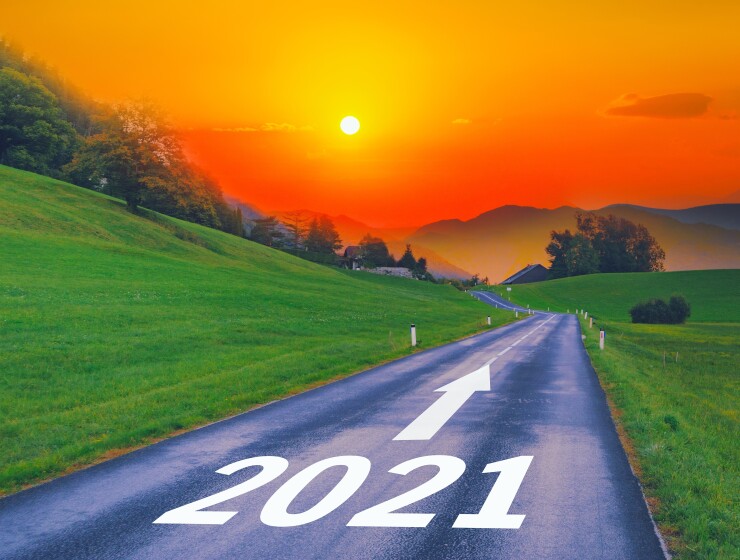As COVID-19 continues to wreak havoc on the global economy, 2021 looks like it will be a rocky road, according to strategists at Wells Fargo Investment Institute.
Their outlook calls for a slow start to the year, followed by an acceleration.
“We expect uneven world economic growth of 5.2% in 2021, accompanied by firmer but sub-2% inflation for most of 2021,” said Sameer Samana, senior global market strategist at WFII, during its 2021 virtual outlook conference on Tuesday. ”We believe sustained growth will prevail as the U.S. overcomes disruptions from coronavirus, uncertain election aftermath and a fiscal stalemate to post respectable 3.8% growth.”

If the Republicans hold onto to the Senate, WFII expects only modest fiscal programs. “In that event, fiscal policy may not produce new inflation pressures,” Samana said.
Emily Roland, co-chief investment strategist at John Hancock Investment Management, also sees little inflation.
“The low inflation environment will stay that way with all the slack in the economy,” she said at her firm's 2021 outlook virtual conference on Tuesday.
She will be watching for any missteps from the Federal Reserve, although she doesn’t expect any.
“Any mistakes from the Fed would be tailwind,” Roland said. “The markets are hyper focused on every word that comes out of [Federal Reserve Board Chair Jerome] Powell’s mouth. So far they have been great and we expect them to continue to do everything they can.”
Low interest rates and an elevated savings rate counter the headwinds from the possibility of further lockdowns as the number of coronavirus cases rise and a stalemate on stimulus, WFII said in the report. “Solid gains in inflation-adjusted income and household wealth, should support housing and consumer-led growth in the U.S.”
They also anticipate the Fed to stay “accommodative.”
“We while expect volatility to remain elevated, we think policymakers will ensure ample liquidity remains accessible to help markets weather this unique environment,” said the WFII 2021 outlook report. “We see rates in longer maturities rising modestly but expect interest rates to remain at low levels for the foreseeable future.”
Small business optimism
Small business optimism dropped to 101.4 in November from 104.0 in October, as more than half the components fell, according to the National Federation of Independent Business.
The uncertainty index fell to 90 from 98 in the previous month.
“Small business owners are still facing major uncertainties, including the COVID-19 crisis and the upcoming Georgia runoff election, which is shaping how they’re viewing future business conditions,” according to Bill Dunkelberg, NFIB chief economist. “The recovery will remain uneven as long as we see state and local mandates that target business conditions and disproportionately affect small businesses.”
Productivity
Non-farm productivity climbed a downwardly revised 4.6% in the third quarter after soaring 10.6% in the second quarter, while unit labor costs dropped an upwardly revised 6.6% after a 12.3% jump a quarter earlier, the Labor Department reported Tuesday.
In the first read, productivity was up 4.9% in the third quarter while unit labor costs fell 8.9% in the initial read.
“Over the last four quarters, nonfarm business productivity increased 4.0%, reflecting a 3.4% decline in output and a 7.1% decline in hours worked,” the report said. “The third-quarter decline in unit labor costs followed three consecutive quarterly increases, and nonfarm business unit labor costs increased 4.0 percent over the last four quarters.”
Economists polled by IFR Markets anticipated a 5% increase in productivity and 8.9% decrease in unit labor costs.





